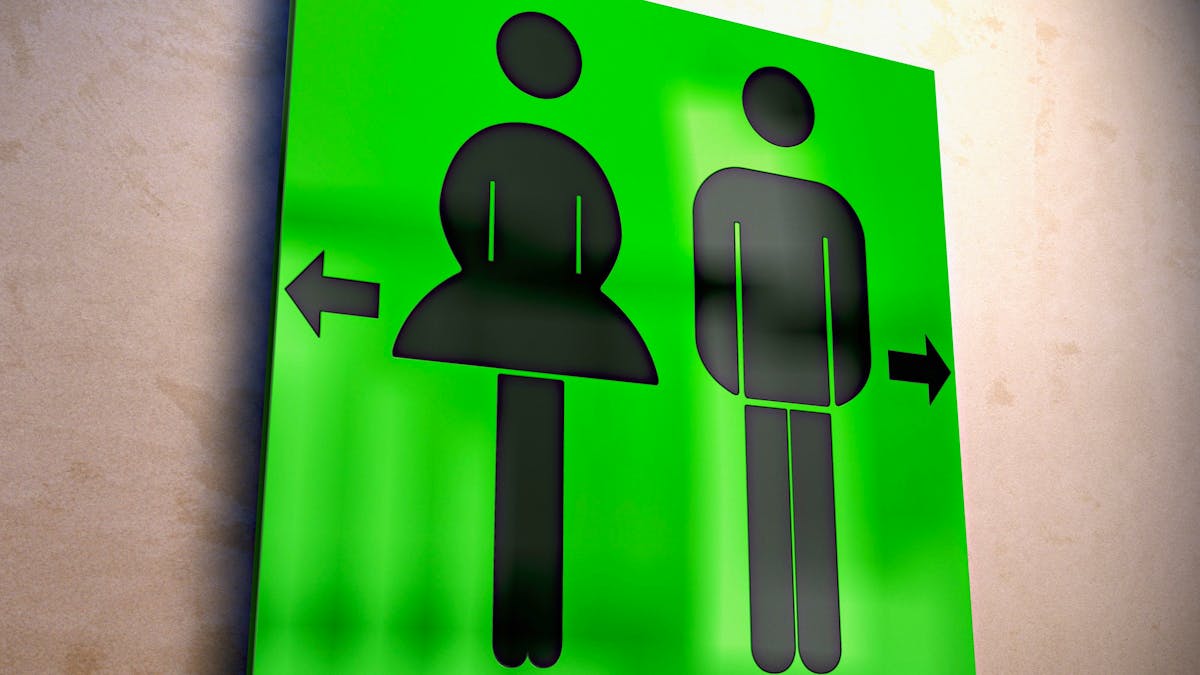A character always in pants and another systematically in dress: the pictograms signaling the toilets of men and women “have reflected and fed” gender stereotypes for decades, notes the French psychiatrist Serge Tisseron, who publishes a book on the subject on Wednesday.
These symbolic images now tend to be replaced by others, more neutral, he explains in “at the bottom of the corridor on the left”, based on his collection of approximately 200 pictograms, photographed on the doors of the places of comfort in various places, mainly in France and in the United States.
Why pictograms?
The separate toilets developed at the beginning of the 20th century, when women began to invest in public space, at a time when it is estimated that they must be protected from men.
At first, the words “men” and “women” are displayed on the doors, described to AFP Serge Tisseron. But for foreign travelers, it was “difficult to find your way”. With the development of tourism, the idea of having “images that are universally read” therefore “made its way in the 1950s”.
The movement begins in Japan: the country provides for a universal visual language for visitors who will go there during the 1964 Olympic Games.
A male stereotypical vision
The first pictograms products in series represent stylized silhouettes, from a man in pants and a woman in a skirt or in a dress. In parallel, many owners of places choose to create their own images, specifies Serge Tisseron.
Elegant outfits of different eras, ancestor portraits, objects (delicate or basic gloves, revolver or heel shoe) appear on the doors of the toilet. Main trend: male images with characters with “wide shoulders” and accessories such as a cane inspire “strength”, while women “evoke either maternity, with an extremely wide basin, or seduction”, analyzes the psychiatrist. The vast majority of representations “manufactured by men”.
A slow evolution
Throughout the 20th century, the habits and behaviors of both sexes changed considerably. For example, at the clothing level, women have adopted pants, shorts and t-shirts.
“Fashion has evolved but the representations of the masculine and the feminine had more difficulty in following,” comments Serge Tisseron. The pictograms have long “remained trapped in traditional imaging”.
Main evolution during this period, according to him: the diffusion in the years 1970-1980 of abstract pictograms, characters composed entirely of geometric figures. But always representing wide shoulders and a fine basin for sir, the opposite for Madame.
Images that influence us
We only throw them a quick glance before pushing the door of the toilets, but we are confronted every day with these stereotypical symbols.
However, the images that repeat themselves “mark our imagination”, Pointes Serge Tisseron. These pictograms “influence our representation of what a man and a woman is, as other visuals do, for example advertisements.
Activists and associations have denounced stereotypical marketing and its impact for several years. This is the case, for example, of a sexist nugget, which denounces ordinary sexism in particular on social networks. On the other hand, “so far, the gender signage of the toilet had not been pointed out as carrying the same responsibility,” observes the psychiatrist.
Towards more neutrality
These stereotypical pictograms maintain “standards” which “no longer correspond to the state of the company” of today, notes Serge Tisseron. Result: they are starting to be replaced by new more “neutral” symbols, either the “toilets” or “WC” indications, or images “which include the notion of gender diversity”.
New characters appear, some humorous: women in pants, half-man half-female people or even extraterrestrials.
The toilets thus become mixed, a concept however far from being unanimous. Its defenders emphasize that this facilitates the daily life of transgender people, while its opponents fear that women are less safe.

